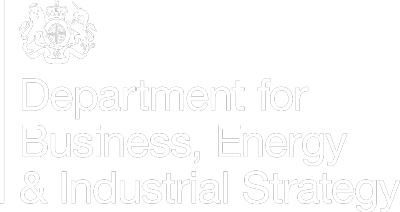Historical Research
Landmarks Relevant to the Study of British Bivalves
Shells have been used for decoration, trade and art universally since prehistoric times, it was not until the late 17th century that a more scientific approach came about. In 1678 Martin Lister produced a work on spiders and molluscs of the British Isles with illustrations. One of his later works ‘Historia Conchyliorum’ shows systematic arrangement and some figures from this work were used by Linnaeus.
The list below highlights the conchologists that have contributed towards the total knowledge today of British bivalves. The differences between 18th and 19th century conchologists and their 20th and 21st century counterparts are marked. The earlier were all-rounders; writing and describing all forms of natural history and they were great collectors, whereas the latter tended to specialise in one or more phyla (groups such as molluscs or polychaetes (bristle worms)).
Carl Linnaeus (by some known as Carl von Linné) (1707-1778)
Born in Stenbrohult, South Sweden in 1707 Linnaeus showed an interest in plants and their names from an early age. He began a medical degree in 1727, which he completed in 1735, in the same year that he first published Systema Naturae, which has seen many revisions since. The tenth edition (1758) has produced many new species names that are still used today
Many of Linnaeus’ students were included in voyages of exploration (including Captain Cook’s) and brought back specimens for him to describe. As his renown spread more people sent him plants and animals to describe which included many bivalves. He became physician to the Swedish royal family and in 1761 he was granted nobility and became Carl von Linné.
Linnaeus marks the beginning of recognised nomenclature and fiftyseven of his British bivalve names are currently still in use. The Linnean Society
 Carl Linnaeus
Carl LinnaeusThe Linnaeus Schools Project
Emanuel Mendes da Costa (1717-1791)
Da Costa was a Portugese Jew, much of whose family fled to England in the 1720s to escape the Inquisition. A Jack-of-all-trades in the natural world (as were many of his peers at that time), his interests were in fossils, geology, mineralogy and conchology.
Da Costa corresponded with Linnaeus and other eminent scientists of the age for discussions regarding taxonomic issues. He was Clerk to the Royal Society for four years but forced to resign and then imprisoned for five years for embezzling Society funds! In 1776 de Costa published his Elements of Conchology, or An Introduction to the Knowledge of Shells which includes a section on how to collect, clean and preserve shells. British Conchology was published in 1778 which was thought an extremely useful contribution to the natural history of Great Britain. Da Costa is apparently the first to have used the word conchology in his written works. 9 of his new bivalve species names are currently still in use. His collection was bought by Edward Donovan (see below). Nine of his new bivalve species names are currently still in use.
For further information on da Costa see p.200-201 in WG Maton 1803 XII An Historical Account of Testaceological Writers. Transactions of the Linnean Society 7: 119-214.
 Da Costa 1778 - 'The British Conchology'
Da Costa 1778 - 'The British Conchology'Dr Richard Pulteney (1730-1801)
Born at Mountsorrel, Leicestershire in 1730 he began his professional life at 15 as an apothecary’s assistant. Pulteney corresponded with many eminent natural historians of that age and built up a great knowledge of flora and fauna before and after the time he trained as a physician. He contributed to Hutchinson’s The Natural History of Dorsetshire with “The History of the Mollusca” and published numerous new species of Mollusca in Catalogues of the Birds, Shells, and some of the more rare Plants (1799). His collection was bequeathed to Linnean Society and sold in 1863. Three of his bivalve species names are still in use.
J Bowden & D Heppell 1968 Pulteney’s ‘Dorset Catalogues’ with speciesl reference to the mollusca. Journal of Conchology 26: 321-328.
RH Jeffers 1960 Richard Pulteney, M.D, F.R.S. (1730-1801), and his Correspondents. Proceedings of the Linnean Society 171 (1-2): 15.
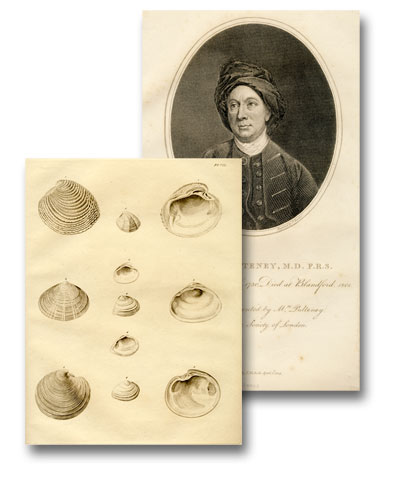
Colonel George Montagu (1753-1815)
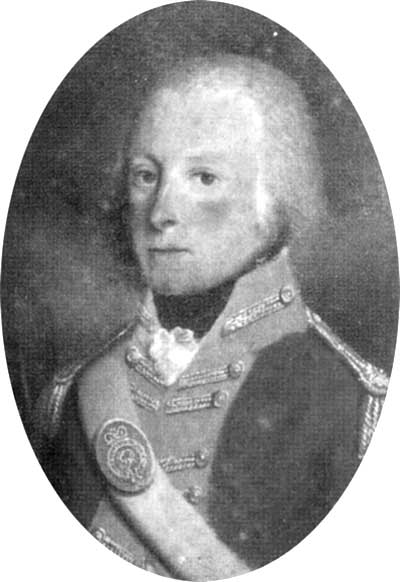
George Montagu
Edward Donovan (1768-1837)
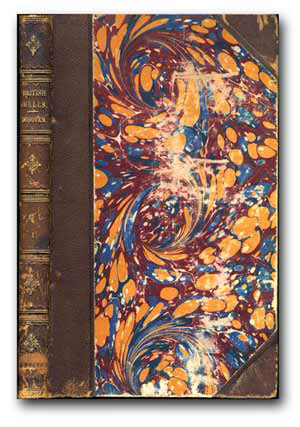 Natural History of British Shells Vol. I.(1804).
Natural History of British Shells Vol. I.(1804).Captain Thomas Brown (1785-1862)
J Wilfrid Jackson 1944 Biography of Captain Thomas Brown (1785-1862), a former Curator of the Manchester Museum. Memoirs & Proceedings of the Manchester Literary and Philosophical Society 86: 1-28.
Dr William Turton (1762-1835)
 Conchylia Insularum Britannicarum
Conchylia Insularum Britannicarum(The shells of the British Isles)
William Clark (1788-1869)
 British Marine Testaceous Mollusca
British Marine Testaceous MolluscaEdward Forbes (1815-1854)
Forbes was born on Isle of Man in 1815. He was a born naturalist and began collecting shells amongst other fauna as a child. In 1841-2 he was appointed naturalist on the ‘Beacon’ – a survey ship and dredged British and Mediterranean waters to investigate the biology and geology of these areas. He was one of the first to use the dredge for scientic purposes and from these investigations published the Report on the Mollusca and Radiata of the Aegean Sea (1844). In 1853 Forbes’ and Hanley’s British Mollusca was published in 4 volumes. Forbes was appointed to the chair of natural history in Edinburgh in 1853 but sadly died a year later. His collection was bequeathed to the Royal Scottish Museum in 1856. Six of Forbes’ new British bivalve names species (one with Hanley and another with MacAndrew) are in current usage.
Forbes, E. (1844). "Report on the Mollusca and Radiata of the Aegean Sea, and on their distribution, considered as bearing on geology". Report of the British Association for the Advancement of Science for 1843. pp. 129–193.
Preece, R. C. & I. J. Killeen 1995 Edward Forbes (1815-1854) and Clement Reid (1853-1916): two generations of pioneering polymaths. Archives of Natural History, 22(3): 419-435.
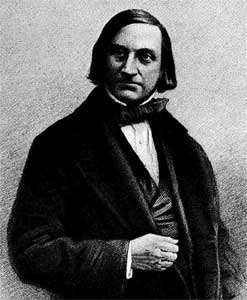 Edward Forbes
Edward ForbesThis image comes from The Report of the Scientific Results of the Exploring Voyage of HMS Challenger during the years 1873-1876 published 1885-95.
Sylvanus Charles Thorp Hanley (1819-1899)
Hanley was born at Oxford in 1819. He inherited a large sum from his father and was able to follow his passion - conchology. His Illustrated and Descriptive Catalogue of Recent Bivalve Shells which figured 960 species was published in 1842-56. In his professional lifetime Hanley described over 200 new species and his large mollusc collection is in Leeds Museum, except his types and figured material which are in Natural History Museum, London. Just one of Hanley’s new British bivalve species names (with Forbes) is in current usage.
Smith, E.A. 1900 Sylvanus Hanley. Journal of Conchology, 9: 269-270
Norris, A. & S.P. Dance 2002 Sylvanus Charles Thorp Hanley (1819-1899) a nineteenth-century dilettante of the shell world. Journal of Conchology, 37(4): 363-382.
John Gwyn Jeffreys (1809-1885)
Born in 1809 at Swansea. His first paper on mollusca was published when he was just 19 years of age. He trained as a solicitor but continued to collect mollusca throughout his professional life and after his retirement in 1866. Published his British Conchology in 5 volumes 1862-1869. He published many papers on North Atlantic species of mollusca procured during the ‘Lightning’, ‘Valorous’ and ‘Porcupine’ expeditions. Jeffreys was extremely knowledgable on the North Atlantic shores and collected extensively; purchasing 1000’s of shells from other collectors from Mediterranean and North Atlantic. His British collection, which included the collections of Clark and Turton and some of Montagu’s types, was purchased by William Healey Dall for the Smithsonian Institution, Washington. Some of his material from the ‘Lightning’, ‘Porcupine’, ‘Knight-Errant’ and ‘Shearwater’ Expeditions is at the Natural History Museum, London. Fortyfour of Jeffreys’ new British bivalve species names are in current usage.
C Matheson 1972 John Gwyn Jeffreys Glamorgan Historian 8: 29-35.
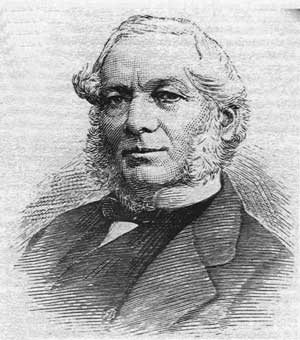 John Gywn Jeffreys
John Gywn JeffreysMichael Sars (1805-1869)
Born in Bergen, Norway in 1805 he studied theology and natural history. In 1829 his Contributions to the Natural History of Marine Animals was published followed by Descriptions and Observations etc (1835) and Fauna Littoralis Norvegiae (1846) in all of which he described new taxa alongside full ecological and biological information on the species. His work on deep-sea organisms, spurred on by Forbes theory that no life existed beyond 300 fathoms (550m) prompted work on the Norwegian fjords where featherstars were discovered at great depths. His son, Georg Ossian Sars continued his work on his father’s death and published some of his work posthumously (1870). Two of M Sars’ new British bivalve species names are in current usage.
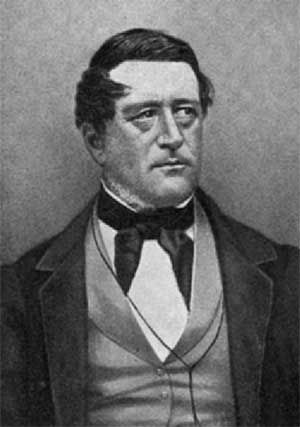 Michael Sars.
Michael Sars.Georg Ossian Sars (1837-1927)
Son of Michael Sars, he was born in Florø, Norway in 1837. Sars studied medicine and zoology and became head of the Norway Fishing Department. In 1876-1878 he lead the first North Sea expedition to study the affect of whaling on the cod industry. Sars published his work on marine mollusca in Mollusca Regionis Arcticae Norvegiae 1878.
Four of GO Sars’ new species names are in current usage in our study area.
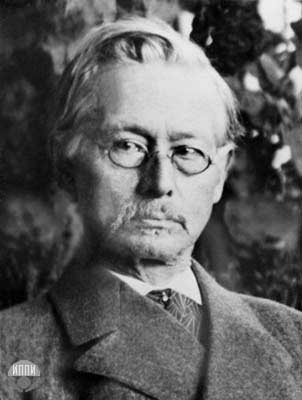 Georg Ossian Sars
Georg Ossian SarsImage: Dept. of Information Science & Bergen Museum - University of Bergen
Ronald Winckworth (1884-1950)
Winckworth was the first to come up with the idea of dividing the waters of Great Britain into Sea Areas which are used today in the Conchological Society recording schemes and atlases. Three of Winckworth’s new British bivalve species names are in current usage.
*Winckworth R. 1932 The British Marine Mollusca. Journal of Conchology 19: 211-252

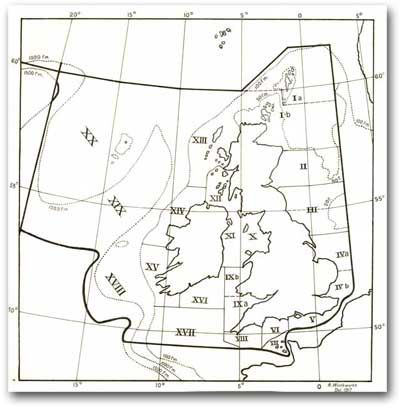 Winkworth's Sea Area Map
Winkworth's Sea Area MapCharles Maurice Yonge (1899-1986)
Born in Wakefield in 1899 he joined the army in 1917-18. Yonge became interested in biology and functional morphology after attending a course in Plymouth and continued to write papers on bivalves and filter feeding mechanisms. He wrote books on general marine biology: British Marine Life (1944), The Seashore (1949) and Collins Pocket Guide to the Seashore (1958) with JH Barrett. He also wrote purely on mollusca: Living Marine Molluscs with TE Thompson (1976) and in 1960 his book Oysters was published, a culmination of a lifetime’s work. His ideas on morphology and evolution of bivalves were expressed in a multitude of papers over a period of 60 years of research. Yonge was knighted in 1967 for his work in the studies of bivalves and is renowned in the mollusc and marine biology world still today.
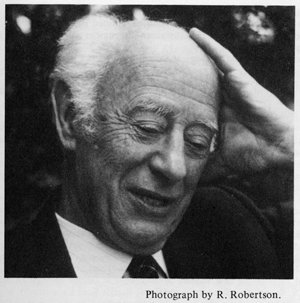 Charles Maurice Yonge
Charles Maurice YongeImage: Malacological review 1986 vol 19 p 127
Norman Tebble (1924-1998)
Tebble was born at East Sleekburn, Northumberland in 1924 and served as a pilot from 1942-46 serving in India and Burma. Tebble studied marine invertebrates and worked on many groups of invertebrates before his position at the British Museum where he worked on polychaetes for ten years before being given responsibility for the mollusc collection. Tebble transformed the chaos into order whilst writing his British Bivalves Seashells (1966). He was appointed a lectureship in Zoology and curator of its Zoological collections at the University of Oxford in 1968. The Royal Scottish Museum (Edinburgh) appointed Tebble director in 1971 until his retirement in 1984.
 British Bivalves Seashells (1966).
British Bivalves Seashells (1966).Checklists & Atlases of British Mollusca
Bowden, J & Heppell, D 1966 Revised list of British Mollusca 1 Introduction; Nuculacea-Ostracea. Journal of Conchology 26: 99-124.
Bowden, J & Heppell, D 1966 Revised list of British Mollusca 2 Unionacea-Cardiacea. Journal of Conchology 26: 237-272.
Marine Conservation Society 1997 The Species Directory of the Marine Fauna and Flora. Ulster Museum.
Seaward DR (editor) 1982 Sea Area Atlas of the Marine Molluscs of Britian and Ireland. Conchological Society and Nature Conservancy Council. 53 pp + 743 maps.
Seaward DR (editor) 1990 Distribution of the Marine Molluscs of North West Europe. Conchological Society and Nature Conservancy Council. 114 pp.
Smith, SM & Heppell D 1991 Checklist of British Marine Mollusca. National Museums of Scotland information series no 11.
Winckworth R 1932 The British Marine Mollusca. Journal of Conchology 19: 211-252.
Other checklists relevant to the British fauna
Backeljau T. 1986 Lijst van de recente mariene mollusken van Belgie. Institut Royal des Sciences naturelles de Belgique.106pp.
Brattegard T & Holthe T 1997 Distribution of Marine, benthic macro-organisms in Norway. Research Report for DN 1997-1. Directorate for Nature Management. 409pp.
CLEMAM Taxonomic Database on European Marine Mollusca.
Jensen KR & Knudsen J 1995 Annotated Checklist of recent marine molluscs of Danish water.
General References/Further Reading
Lister M 1678 Historiae animalium Angliae 250pp.
Lister M 1685-92 Historiae Conchyliorum 667pp.
Maton WG1803 XII An Historical Account of Testaceological Writers. Transactions of the Linnean Society 7: 119-214
Melvill JC1889 British Pioneers in recent Conchological Science Journal of Conchology 6: 190-223.

